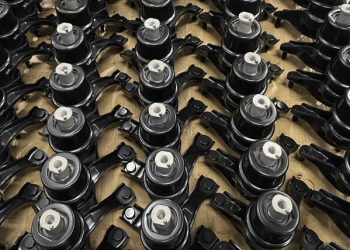What do basketball legends Dennis Rodman, Moses Malone, and Bill Russell have in common? Rebounding! This underappreciated skill is often the key to victory. In this article, we’ll delve into the true purpose of rebounding in basketball and reveal the secrets of this essential but often overlooked aspect of the game.
Join us as we uncover the hidden power of rebounding and celebrate the unsung heroes who have made it their specialty.
The Basics of Rebounding
A rebound occurs when a player gains possession of the ball after a missed shot. There are two types of rebounds: offensive and defensive. Offensive rebounds give the team a second chance to score, while defensive rebounds prevent the opposing team from doing so.
Rebounding is a critical component of basketball strategy. It allows teams to extend possessions, limit opponent scoring opportunities, and dictate the game’s tempo.
The Unsung Heroes: Rebounding Legends
Several players have stood out for their exceptional rebounding skills throughout basketball history. Dennis Rodman, known as “The Worm,” led the NBA in rebounds for seven consecutive seasons. Moses Malone, another legendary rebounder, earned the nickname “Chairman of the Boards” for his dominance on the glass.
These players and others like Bill Russell and Wilt Chamberlain set the standard for rebounding excellence and have left a lasting impact on the game.
The Science Behind Rebounding
Rebounding is a complex art that combines physics, timing, and positioning. A player’s ability to anticipate the ball’s trajectory and calculate their jump’s optimal position and time is essential for successful rebounding.
Spatial awareness and a keen understanding of the game’s dynamics also play a crucial role, as rebounders must track both the ball and their opponents’ movements to secure possession effectively.
The Art of Boxing Out
Boxing out is a fundamental technique in rebounding that involves positioning oneself between an opponent and the basket to gain a better chance of grabbing the rebound. Proper boxing out technique requires players to maintain a low and wide stance, using their arms and body to block their opponent’s path to the ball.
Communication and teamwork are vital components of boxing out. Players must cooperate to secure rebounds and prevent opponents from gaining second-chance opportunities.
Rebounding Drills and Exercises
Several drills can help players improve their rebounding skills, such as the “Mikan Drill,” which focuses on coordination and timing, and the “Tip Drill,” which helps develop touch and control around the rim. Regularly practicing these drills and a strong work ethic and persistence will significantly improve rebounding performance.
Don’t forget to incorporate a basketball passing machine and shooting machine into your training regimen to maximize efficiency and results.
The Impact of Rebounding on Game Outcomes
Numerous studies have demonstrated a strong correlation between rebounding and winning games. Teams consistently outrebound their opponents are more likely to secure second-chance points, limit opponent scoring opportunities, and maintain possession.
Rebounding also plays a critical role in controlling the game’s pace, allowing teams to dictate the tempo and exploit weaknesses in their opponent’s defensive strategies.
The Evolution of the Rebounder Role
Rebounding has come a long way since the early days of basketball. Today, the role of rebounders has evolved to include versatile big men who can not only dominate the glass but also shoot from the perimeter, thanks to advancements in basketball machines.
Players like Kevin Garnett, Dirk Nowitzki, and Anthony Davis have revolutionized the position, proving that rebounders can contribute significantly to their team’s offensive capabilities while maintaining their rebounding prowess.
Tips for Aspiring Rebounders
If you want to improve your rebounding skills, consider the following tips: study and learn from the best rebounders in the game, focus on proper nutrition and conditioning to maximize your physical potential, and never underestimate the importance of practice and perseverance.
Incorporate technology, such as automatic basketball return systems and a ball machine basketball, to hone your skills and achieve optimal performance on the court.
Conclusion:
The true purpose of rebounding in basketball goes beyond securing possession; it’s a vital aspect of the game that can dictate the outcome and define the careers of legendary players.
By recognizing and appreciating the unsung heroes who excel in this critical skill, we can better understand the game’s intricacies and inspire the next generation of rebounding masters. Embrace the art of rebounding and unlock the potential for transforming your game.






